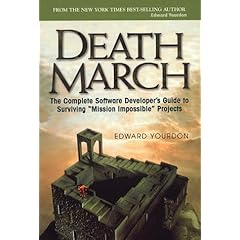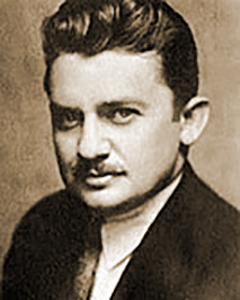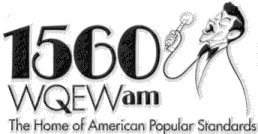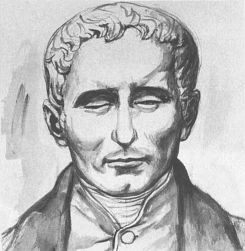David Lloyd George, 1st Earl Lloyd-George of Dwyfor, OM,
PC (
17 January 1863 –
26 March 1945) was a
British statesman who guided Britain and the
British Empire through the latter half of
World War I and the first four years of the peace as
Prime Minister, 1916-1922.
Upbringing and early life In 1905, he entered the new Liberal Cabinet of Sir
Henry Campbell-Bannerman as
President of the Board of Trade. In that position he brought legislation on many topics, from Merchant Shipping and Companies to Railway regulation but his main achievement was in stopping a proposed national strike of the railway unions by brokering an agreement between the unions and the railway companies. While almost all the companies refused to recognise the unions Lloyd George persuaded the companies to recognise elected representatives of the workers who sat with the company representatives on conciliation boards -one for each company. If those boards failed to agree then there was a central board. This was Lloyd George's first great triumph for which he received praises from among others
Kaiser Wilhelm II. His great excitement - apparent from his letters to his family -was crushed by his daughter Mair's death from appendicitis a fortnight later in November 1907.
On Campbell-Bannerman's death he succeeded Asquith, who had become Prime Minister, as
Chancellor of the Exchequer from 1908 to 1915. While he continued some work from the Board of Trade - for example legislation to establish a Port of London authority and to pursue traditional Liberal programmes such as licensing law reforms -his first major trial in this role was over the 1908-1909 Naval Estimates. The Liberal manifesto at the
1906 general elections included a commitment to reduce military expenditure. Lloyd George strongly supported this writing to
Reginald McKenna First Lord of the Admiralty "the emphatic pledges given by all of us at the last general election to reduce the gigantic expenditure on armaments built up by the recklessness of our predecessors." He then proposed the programme be reduced from six to four
dreadnoughts. This was adopted by the government but there was a public storm when the Conservatives, with covert support from the
First Sea Lord Admiral
Jackie Fisher campaigned for more with the slogan "We want eight and we wont wait.' This resulted in Lloyd George's defeat in Cabinet and the adoption of estimates including provision for eight dreadnoughts. This was later to be said to be one of the main turning points in the naval arms race between Germany and Britain that contributed to the causes of
World War I.
He was largely responsible for the introduction of old age pensions, unemployment benefit and state financial support for the sick and infirm - legislation often referred to as the
Liberal reforms. These social benefits were met with great hostility in the House of Lords where the "
People's Budget" Lloyd George championed to introduce and finance them was rejected because it angered the landed gentry. These social reforms began in Britain the creation of a welfare state that had been preceded in Germany some 20 years earlier. They fulfilled in both countries the aim of dampening down the demands of the growing working class for rather more radical solutions to their impoverishment.
Considered a
pacifist until 1914, Lloyd George changed his stance when
World War I broke out. When the Liberal government fell as a result of the
Shell Crisis of 1915 and was replaced with a coalition government dominated by Liberals still under the Premiership of Asquith, Lloyd George became the first
Minister of Munitions in 1915 and then
war secretary in 1916.
Cabinet Minister (1905-1916) Prime Minister (1916-1922) According to his political opponents in the Liberal Party he maneuvered to replace Asquith as Prime Minister of a new wartime coalition government between the Liberals and the
Conservatives, but his allies argued that Asquith's loss of the leadership was brought about by his own failures as a leader. The result was a split of the Liberal Party into two factions; those who supported Asquith and those who supported the coalition government. His support from the Unionists was critical, and he ruled almost as a president. In his
War Memoirs [v 1 p 602], he compared himself to Asquith:
There are certain indispensable qualities essential to the Chief Minister of the Crown in a great war. . . . Such a minister must have courage, composure, and judgment. All this Mr. Asquith possessed in a superlative degree. . . . But a war minister must also have vision, imagination and initiative--he must show untiring assiduity, must exercise constant oversight and supervision of every sphere of war activity, must possess driving force to energize this activity, must be in continuous consultation with experts, official and unofficial, as to the best means of utilising the resources of the country in conjunction with the Allies for the achievement of victory. If to this can be added a flair for conducting a great fight, then you have an ideal War Minister.
After December 6, 1916, despite occupying the Premiership Lloyd George was not all powerful, being dependent on the support of Conservatives for his continuance in power. This was reflected in the make-up of his 5-member war cabinet, which as well as himself included the Conservative Lord President of the Council and Leader of the House of Lords,
Lord Curzon; Chancellor of the Exchequer and Leader of the House of Commons,
Andrew Bonar Law; and Minister without Portfolio, Lord Milner. The fifth member,
Arthur Henderson, was the unofficial representative of the
Labour Party. This accounts for Lloyd George's inability to establish complete personal control over military strategy, as Churchill did in the Second World War, and accounted for some of the most costly military blunders of the war. Nevertheless the War Cabinet was a very successful innovation. It met almost daily, with Sir Maurice Hankey as secretary, and made all major political, military, economic and diplomatic decisions. Rationing was finally imposed in early 1918 and was limited to meat, sugar and fats (butter and oleo) – but not bread; the new system worked smoothly. From 1914 to 1918 trade union membership doubled, from a little over four million to a little over eight million. Work stoppages and strikes became frequent in 1917-18 as the unions expressed grievances regarding prices, liquor control, pay disputes, "dilution," fatigue from overtime and from Sunday work, and inadequate housing.
Conscription put into uniform nearly every physically fit man, six million out of ten million eligible. Of these about 750,000 lost their lives and 1,700,000 were wounded. Most deaths were to young unmarried men; however 160,000 wives lost husbands and 300,000 children lost fathers. [Havighurst p 134-5]
The originality and creativity of the many organizations and systems which Lloyd George created to fight the First World War is demonstrated by the fact that most were replicated when war came again in 1939. As Lord Beaverbrook remarked, 'There were no signposts to guide Lloyd George.'
 War leader (1916-1918)
War leader (1916-1918) At the end of the war Lloyd George's reputation stood at its zenith. A leading Conservative said
He can be dictator for life if he wishes. In the "Coupon election" of 1918 he declared this must be a land "fit for heroes to live in." He did not say, "We shall squeeze the German lemon until the pips squeak" (that was
Eric Campbell Geddes) but he did express that sentiment about reparations from Germany to pay the entire cost of the war, including pensions. At Bristol, he said that German industrial capacity "will go a pretty long way." We must have "the uttermost farthing," and "shall search their pockets for it." As the campaign closed, he summarized his program:
His "National Liberal" coalition won a massive landslide, winning 525 of the 707 contests; however the Conservatives had control within the Coalition of more than two-thirds of its seats. Asquith's independent Liberals were crushed and emerged with only 33 seats, falling behind Labour. [Havighurst p 151]
Lloyd George represented Britain at the
Versailles Peace Conference, clashing with French Premier
Georges Clemenceau, American President
Woodrow Wilson and
Italian Prime Minister Vittorio Orlando. Lloyd George wanted to punish Germany politically and economically for devastating Europe during the war, but did not want to utterly destroy the German economy and political system the way Clemenceau and many other people of France wanted to do with their demand for massive reparations. Memorably, he replied to a question as to how he had done at the peace conference, "Not badly, considering I was seated between Jesus Christ and Napoleon" (Wilson and Clemenceau). The British economist
John Maynard Keynes attacked Lloyd George's stance on reparations in his book
The Economic Consequences of the Peace calling the Prime Minister a "half-human visitor to our age from the hag-ridden magic and enchanted woods of Celtic antiquity".
Lloyd George began to feel the weight of the coalition with the Conservatives after the war. His decision to extend conscription to Ireland was nothing short of disastrous, indirectly leading a majority of Irish MPs to declare independence. He presided over a
war of attrition in Ireland, which led to the negotiation of the
Anglo-Irish Treaty with
Arthur Griffith and
Michael Collins and the formation of the
Irish Free State. At one point, he famously declared of the
IRA, "We have murder by the throat!" However he was soon to begin negotiations with IRA leaders to recognise their authority and end the conflict.
Lloyd George's coalition was too large, and deep fissures quickly emerged. The more traditional wing of the Unionist Party had no intention of introducing these reforms, which led to three years of frustrated fighting within the coalition both between the National Liberals and the Unionists and between factions within the Conservatives themselves. It was this fighting, coupled with the increasingly differing ideologies of the two forces in a country reeling from the costs of war that led to Lloyd George fall from power. In June 1922 Conservatives were able to show that he had been selling knighthoods and
peerages for money. Conservatives were concerned by his desire to create a party from these funds comprising of moderate Liberals and Conservatives. A major attack in the
House of Lords followed on his corruption resulting in the
Honours (Prevention of Abuses) Act 1925. The Conservatives also attacked Lloyd George as lacking any executive
accountability as Prime Minister, claiming that he never turned up to
Cabinet meetings and banished some government departments to the gardens of 10 Downing Street.
His government was brought down by the
Chanak Crisis during which on
12 October 1922 at a meeting called by
Austen Chamberlain as the leader of the Conservatives in the House of Commons, the frustrated and underused coalition backbenchers sealed Lloyd George's fate. Chamberlain and other prominent Conservatives such as
Lord Birkenhead argued for supporting Lloyd George, while prospective party leader
Andrew Bonar Law argued the other way, claiming that breaking up the coalition "wouldn't break Lloyd George's heart". The main attack came from
Stanley Baldwin, then a junior treasury minister, who spoke of Lloyd George as a "dynamic force" who would break the Conservative Party. Baldwin and many of the more progressive members of the Conservative Party fundamentally opposed Lloyd George and those who supported him on moral grounds. The motion that the Conservative Party should fight the next election (then due in a matter of months) on its own, rather than co-operating with the Coalition Liberals was carried 187 to 86.
Trial of the
Kaiser;
punishment of those guilty of atrocities;
fullest indemnity from Germany;
Britain for the British, socially and industrially;
rehabilitation of those broken in the war; and
a happier country for all.
Postwar Prime Minister (1918-1922) Throughout the next two decades Lloyd George remained on the margins of British politics, being frequently predicted to return to office but never succeeding. Before the 1923 election, he made up his dispute with Asquith, allowing the Liberals to run a united ticket, and in 1926 he succeeded Asquith as Liberal leader. In 1929 Lloyd George became
Father of the House, the longest serving member of the Commons. In 1931 an illness prevented his joining the
National Government when it was formed. Later when the National Government called a General Election he tried to pull the Liberal Party out of it but succeeded in taking only a few followers, most of whom were related to him; the main Liberal party remained in the coalition for a year longer, under the leadership of
Sir Herbert Samuel.
In 1935 he sought to promote a radical programme of economic reform, called "Lloyd George's New Deal" after the American
New Deal. However the programme did not find favour in the mainstream political parties. Later that year Lloyd George and his family reunited with the Liberal Party in Parliament. In August 1936 Lloyd George met Hitler at
Berchtesgaden and offered some public comments that were surprisingly favourable to the German dictator, expressing warm enthusiasm both for Hitler personally and for Germany's public works schemes (upon returning, he wrote of Hitler in the
Daily Express as "the greatest living German", "the George Washington of Germany"). Despite this embarrassment, however, as the 1930s progressed Lloyd George became more clear-eyed about the German threat and joined
Winston Churchill, among others, in fighting the government's policy of appeasement. In the late 1930s he was sent by the British government to try to dissuade
Adolf Hitler from his plans of Europe-wide expansion. In perhaps the last important parliamentary intervention of his career, which occurred during the crucial
Norway Debate of May 1940, Lloyd George made a powerful speech that helped to undermine Chamberlain as Prime Minister and to pave the way for the ascendancy of Churchill as Premier.
Churchill offered Lloyd George a place in his Cabinet but he refused, citing his dislike of Chamberlain. Lloyd George also thought that Britain's chances in the war were dim, and he remarked to his secretary: "I shall wait until Winston is bust".
A pessimistic speech on
May 7,
1941 led Churchill to compare him with
Pétain. He cast his last vote in the Commons on
February 18,
1943 as one of the 121 MPs (97 Labour) condemning the Government for its failure to back the
Beveridge report. Fittingly, his final vote was in defence of the welfare state which he had helped to create.
During the Second World War there was speculation about Lloyd George returning to government, but this came to nothing. Churchill offered Lloyd George a position in his cabinet as Minister for Agriculture, but was refused because Lloyd George felt he was too old. He was pessimistic and resigned about Britain's prospects, fearful of German air raids, and perhaps he wished to avoid being too closely identified with his former protégé in the event of a German conquest. He enjoyed listening to the broadcasts of
William Joyce. Increasingly in his late years his characteristic political courage gave way to physical timidity and hypochondria. He continued to attend Castle Street Baptist Chapel in London, and to preside over the
national eisteddfod at its Thursday session each summer. At the end, he returned to Wales. In September 1944, he and Frances left Churt for Tŷ Newydd, a somewhat bleak farming property near his boyhood home in Llanystumdwy. He was now weakening rapidly and his voice failing. He was still an MP but learned that wartime changes in the constituency meant that Caernarfon Boroughs might go Conservative at the next election.
In early 1945 the great commoner was raised to the peerage as
Earl Lloyd-George of Dwyfor and
Viscount Gwynedd, of
Dwyfor in the
County of
Caernarvonshire; this did not raise his reputation among his admirers. He died of cancer shortly afterwards at Tŷ Newydd, aged 82, without ever taking up his seat in the
House of Lords, Frances and his daughter Megan at the bedside. Four days later, in a simple service, he was buried beside the River Dwyfor in Llanystumdwy. A great boulder marks his grave; there is no inscription.
His perceived double-dealing on many issues alienated many of his former supporters, but there is no doubt that he was a brilliant politician, hence his nickname:
The Welsh Wizard.
Later political career (1922-1945) In January 1941, his wife Dame Margaret died; this deeply upset him and heavy snowdrifts prevented his getting to her bedside before she died. In October 1943, aged eighty, he married his secretary and mistress,
Frances Stevenson (who had been with Lloyd George for over 30 years at the time of his death and became Countess Lloyd George of Dwyfor), a cultivated, beautiful woman now largely remembered for her extensive, insightful diaries that dealt with the issues and statesmen that were a part of her lover's life. This caused severe tension with his daughter and other family members. He had five children: Richard (1889-1968), Mair (1890-1907), Olwen (1892-1990), Gwilym (1894-1967) and Megan (1902-1966). His son,
Gwilym, and daughter,
Megan, both followed him into politics and were elected members of parliament. They were politically faithful to their father throughout his life but following their father's death each drifted away from the Liberal Party, with Gwilym finishing his career as a Conservative
Home Secretary, whilst Megan became a Labour MP in 1957, perhaps symbolising the fate of much of the old
Liberal Party. The Canadian historian
Margaret MacMillan is his great-granddaughter. The British television presenter
Dan Snow is his great-great-grandson.
Family David Lloyd George - Prime Minister
Lord Curzon of Kedleston -
Lord President of the Council and
Leader of the House of Lords Andrew Bonar Law -
Chancellor of the Exchequer and
Leader of the House of Commons Arthur Henderson - Minister without Portfolio
Lord Milner - Minister without Portfolio
War cabinet, December 1916–January 1919 May - August 1917 - In temporary absence of Arthur Henderson,
George Barnes,
Minister of Pensions acts as a member of the War Cabinet.
June 1917 -
Jan Smuts enters the War Cabinet as a Minister without Portfolio
July 1917 -
Sir Edward Carson enters the War Cabinet as a Minister without Portfolio
August 1917 - George Barnes succeeds Arthur Henderson (resigned) as Minister without Portfolio and
Labour Party member of the War Cabinet.
January 1918 - Carson resigns and is not replaced
April 1918 -
Austen Chamberlain succeeds Lord Milner as Minister without Portfolio.
January 1919 Law becomes
Lord Privy Seal, remaining Leader of the House of Commons, and is succeeded as Chancellor of the Exchequer by Chamberlain; both remaining in the War Cabinet. Smuts is succeeded by
Sir Eric Geddes as Minister without Portfolio.
Changes Lord Finlay -
Lord Chancellor Lord Crawford -
Lord Privy Seal Sir George Cave -
Secretary of State for the Home Department Arthur Balfour -
Secretary of State for Foreign Affairs Walter Hume Long -
Secretary of State for the Colonies Lord Derby, and then (after April, 1918), Lord Milner -
Secretary of State for War Austen Chamberlain (to 1917), and then
Edwin Samuel Montagu -
Secretary of State for India Sir Edward Carson, and then (from 1917)
Sir Eric Geddes -
First Lord of the Admiralty Sir Frederick Cawley (to 1918), and then
Lord Beaverbrook and
Lord Downham -
Chancellor of the Duchy of Lancaster Sir Albert Stanley -
President of the Board of Trade H. E. Duke and then
Edward Shortt -
Chief Secretary for Ireland William Fisher - President of the Local Government Board (to 1918)
Sir Auckland Geddes - President of the Local Government Board (to 1919)
Neville Chamberlain, and then (from 1917)
Sir Auckland Geddes -
Director of National Service Winston Churchill - Secretary of State for Munitions (appointed 7.17.17)
Other members of Lloyd George's war government The War Cabinet was formally maintained for much of 1919, but as Lloyd George was out of the country for many months this did not noticeably make much of a difference. In October 1919 a formal Cabinet was reinstated.
David Lloyd George - Prime Minister
Lord Birkenhead -
Lord Chancellor Lord Curzon of Kedleston -
Lord President of the Council and
Leader of the House of Lords Andrew Bonar Law -
Lord Privy Seal and
Leader of the House of Commons Austen Chamberlain -
Chancellor of the Exchequer Edward Shortt -
Secretary of State for the Home Department Arthur Balfour -
Secretary of State for Foreign Affairs Lord Milner -
Secretary of State for the Colonies Winston Churchill -
Secretary of State for War and
Air Edwin Samuel Montagu -
Secretary of State for India Walter Hume Long -
First Lord of the Admiralty Sir Albert Stanley -
President of the Board of Trade Robert Munro -
Secretary for Scotland James Ian Macpherson -
Chief Secretary for Ireland Lord French -
Lord-Lieutenant of Ireland Christopher Addison -
President of the Local Government Board Rowland Edmund Prothero -
President of the Board of Agriculture Herbert Fisher -
President of the Board of Education Lord Inverforth -
Minister of Munitions Sir Robert Horne -
Minister of Labour George Nicoll Barnes -
Minister without Portfolio Sir Eric Geddes - Minister without Portfolio
Changes Bibliography Cross, Colin, ed.
Life with Lloyd George: The Diary of A.J. Sylvester 1975.
Lloyd George, David.
The Truth About the Peace Treaties. 2 vols. Victor Gollancz, 1938
Lloyd George, David, (1933).
War Memoirs of David Lloyd George. 2 vols. London: Ivor Nicholson & Watson. An unusually detailed and candid record.
Morgan, Kenneth O. ed.
Lloyd George Family Letters, 1885-1936. 1973.
Taylor, A. J. P. ed.
My Darling Pussy: The Letters of Lloyd George and Frances Stevenson. 1975.
Taylor, A. J. P. ed.
Lloyd George: A Diary by Frances Stevenson. 1971.
Taylor, A. J. P. ed.
Lloyd George: Twelve Essays. New York, 1971.
 White Spirit
White Spirit During the Holocaust
During the Holocaust End user
End user History
History Alliances
Alliances

 War leader (1916-1918)
War leader (1916-1918)


 Famous acts
Famous acts
 See also
See also